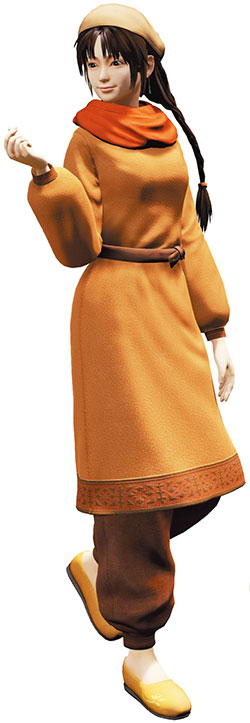 Even if the numbers Shenmue III is pulling in are strong for a Kickstarter project, they’re not anywhere close to a modern, big budget, open-world game. They’re not even close to the $70 million that gets thrown around in discussions about the original’s extravagant cost. But the arguments are frequently misleading, so I want to take the opportunity to discuss some misconceptions and how an authentic Shenmue III experience could be delivered with a much-reduced budget.
Even if the numbers Shenmue III is pulling in are strong for a Kickstarter project, they’re not anywhere close to a modern, big budget, open-world game. They’re not even close to the $70 million that gets thrown around in discussions about the original’s extravagant cost. But the arguments are frequently misleading, so I want to take the opportunity to discuss some misconceptions and how an authentic Shenmue III experience could be delivered with a much-reduced budget.
For one thing, the $70m figure is an exaggeration. Yu Suzuki himself has put it closer to $47m, which doesn’t even hit $70m when adjusted for 15 years of inflation. Not small change, to be sure, but not even close to what a major open-world game can cost today.
It’s thanks to the current prevalence of open-world games that a Shenmue game could be made on a more modest budget, hence this one running on Unreal Engine 4. Shenmue was pushing boundaries with a bespoke engine, doing things that hadn’t been seen before; much of it is commonplace now, easily achieved using off-the-shelf middleware.
The explosion in gaming budgets since Shenmue came out doesn’t make $47m less gigantic in the context of 1999, of course. But something that’s frequently forgotten is that much of that was an investment in this revolutionary tech, which was supposed to power a multi-episode Shenmue saga. The engine was ultimately only used for Shenmue and a single sequel (four chapters in total), making profitability impossible and giving the game the appearance of an outrageous budget. Numbers aren’t available for Shenmue II on its own, but you can see how much further the money went, once it didn’t have to pay for the tech, in its sheer scale.
With that obstacle removed through the use of a third-party engine, able to render environments on the scale of Shenmue in its sleep, all the money goes on content. A budget that’s likely under $20m all-in is still tight, but it appears doable.
My final point is that this simply won’t be as big as Shenmue II. That game was ridiculous in its scale, dwarfing the already-impressive original game. The series has gone from a small hometown to playing the stranger in a foreign metropolis, and this one looks like changing it up again, continuing the rural Chinese setting of Guilin. Even with three locations, Suzuki has compared the planned scale to Dobuita in the first Shenmue, and that’s okay. We’re getting Shenmue III, and it’s a series about density and realism in its detail, rather than sprawling scale. After all these years, I’ll take it.
Ultimately, the precise breakdown of Shenmue III’s funding is unclear. We know that Sony is providing some money for publishing and marketing support, but the team has clarified that the bulk of it will come from Kickstarter. Evidently, Suzuki was prepared to make the game on a budget of $2 million, plus a modest amount of outside funding, and since the game has already breezed past the target, anything we can add, even if this doesn’t approach the scale and grandeur of the Dreamcast games, is gravy.



 Strictly speaking, I’m not an AFC Bournemouth fan. I’ve been a supporter of Manchester United since I was a kid and always will be. But I am a lifelong Bournemouth resident – no United fans actually live in Manchester, remember – and I remember going to Bournemouth games with my dad and uncle. I remember watching on TV as they literally
Strictly speaking, I’m not an AFC Bournemouth fan. I’ve been a supporter of Manchester United since I was a kid and always will be. But I am a lifelong Bournemouth resident – no United fans actually live in Manchester, remember – and I remember going to Bournemouth games with my dad and uncle. I remember watching on TV as they literally 


